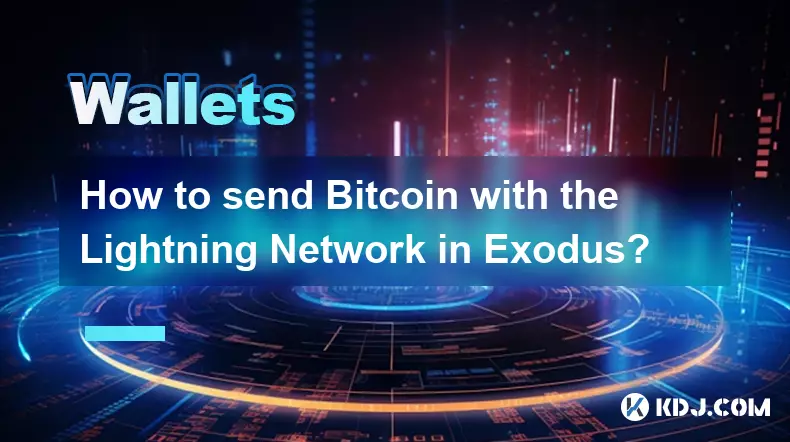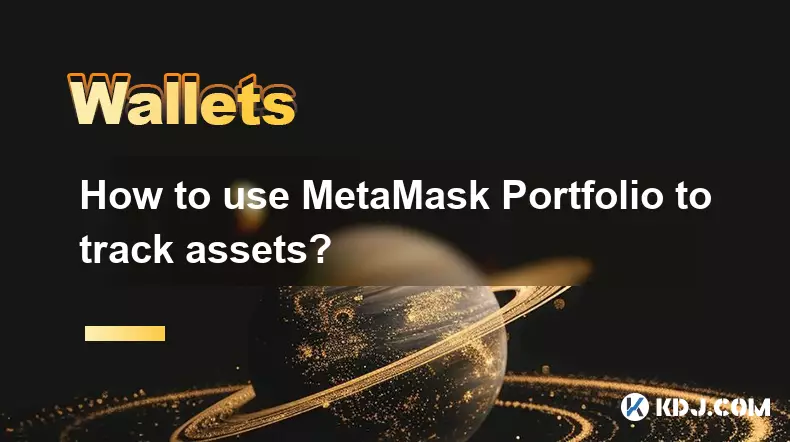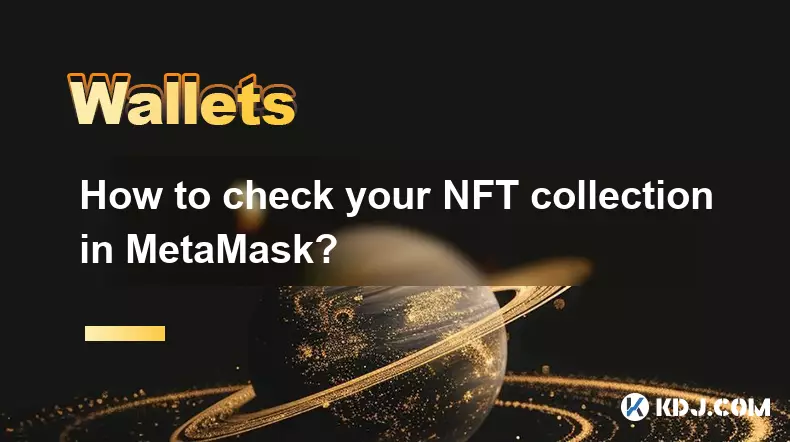-
 bitcoin
bitcoin $103128.103252 USD
-3.33% -
 ethereum
ethereum $3437.127692 USD
-4.86% -
 tether
tether $0.999700 USD
-0.02% -
 xrp
xrp $2.403993 USD
-5.73% -
 bnb
bnb $961.374676 USD
-4.11% -
 solana
solana $154.938665 USD
-8.18% -
 usd-coin
usd-coin $1.000113 USD
0.03% -
 tron
tron $0.298122 USD
0.30% -
 dogecoin
dogecoin $0.172428 USD
-5.76% -
 cardano
cardano $0.557625 USD
-7.13% -
 hyperliquid
hyperliquid $38.740701 USD
-6.51% -
 chainlink
chainlink $15.306051 USD
-7.51% -
 bitcoin-cash
bitcoin-cash $507.558648 USD
-3.26% -
 stellar
stellar $0.281899 USD
-6.74% -
 unus-sed-leo
unus-sed-leo $9.241811 USD
0.57%
How to send Bitcoin with the Lightning Network in Exodus?
Ensure your Exodus wallet is updated, enable Lightning Network in settings, and use the lightning bolt icon to send fast, low-fee Bitcoin transactions via QR or invoice.
Oct 31, 2025 at 09:01 am

Setting Up Your Exodus Wallet for Lightning Network
1. Ensure that your Exodus wallet is updated to the latest version, as older versions may not support Lightning Network functionality. The integration of Lightning requires specific backend updates that are only available in recent releases.
2. Open the Exodus application and navigate to the Bitcoin section within your portfolio. Look for the Lightning bolt icon next to the send button, which indicates that the Lightning Network option is available for transactions.
3. Before sending any funds, confirm that you have sufficient on-chain Bitcoin to open a Lightning channel if one does not already exist. Channel creation might require a small amount of BTC to cover initial on-chain fees.
4. Enable the Lightning Network feature through the settings menu under Bitcoin options. This step activates the layer-2 protocol and allows faster, lower-cost transfers compared to traditional blockchain transactions.
5. Wait for the channel synchronization process to complete. During this time, the wallet connects to peer nodes and establishes secure payment routes necessary for routing payments across the network.
Initiating a Bitcoin Transfer via Lightning
1. Click the “Send” button within the Bitcoin tab and verify that the interface defaults to the Lightning Network mode. A visual indicator such as a purple lightning bolt will appear, distinguishing it from regular on-chain sends.
2. Enter the recipient’s Lightning invoice or scan their QR code using the built-in scanner. These invoices contain encoded data including the payment hash, expiry time, and exact amount in satoshis.
3. Review the transaction details carefully, especially the amount and the fee estimate. Lightning fees are typically a fraction of a cent, making microtransactions highly efficient.
4. Confirm the payment by clicking “Continue” and authorizing with your wallet password or biometric authentication. Once initiated, the transaction is routed through multiple nodes to reach its destination almost instantly.
5. Monitor the status within the transaction history panel. Successful payments display confirmation within seconds, often accompanied by a success animation and updated balance.
Managing Channels and Receiving Payments
1. Access the 'Channels' tab inside the Bitcoin section to view active connections. Each channel shows capacity, direction of balance, and uptime statistics critical for maintaining reliable sending ability.
2. Rebalance channels when necessary to ensure outgoing liquidity. If all your funds are locked toward receiving, you won’t be able to initiate new payments until rebalancing occurs through circular payments or third-party services.
3. Generate your own Lightning invoice to receive payments. Specify the amount in BTC or fiat, set an expiration period, and share the resulting QR code or BOLT11 string with the sender.
4. Keep your wallet online regularly to maintain node connectivity. Offline periods can lead to channel penalties or force closures, potentially resulting in delayed fund recovery.
5. Close channels only when needed, understanding that doing so triggers an on-chain transaction subject to current network congestion and miner fees.
Frequently Asked Questions
What happens if I send a Lightning payment to an expired invoice? The transaction will fail immediately. Lightning invoices include a timestamped expiry, usually ranging from 10 minutes to several hours. Always request a fresh invoice if the original has expired.
Can I recover funds if my device crashes while using Lightning? Yes, provided you have your Exodus backup phrase. However, recovering Lightning balances may take longer than on-chain funds due to reliance on cooperative settlements or breach resolution mechanisms.
Are there limits on how much I can send via Lightning in Exodus? Individual payments are limited by your outbound channel capacity. Most users experience caps between 0.1 BTC and 0.5 BTC per transaction unless they’ve opened high-capacity channels.
Why did my Lightning payment take longer than expected? Delays occur when intermediate nodes lack sufficient liquidity or go offline. Although most payments finalize in under ten seconds, occasional routing issues can extend settlement times up to a few minutes.
Disclaimer:info@kdj.com
The information provided is not trading advice. kdj.com does not assume any responsibility for any investments made based on the information provided in this article. Cryptocurrencies are highly volatile and it is highly recommended that you invest with caution after thorough research!
If you believe that the content used on this website infringes your copyright, please contact us immediately (info@kdj.com) and we will delete it promptly.
- Ethereum, Altcoins, and Long-Term Gains: Navigating the Crypto Landscape
- 2025-11-12 09:00:00
- Strategy Shares, Bitcoin Retreat, and Market Pain: A NYC Perspective
- 2025-11-12 08:55:01
- Taft, Veterans, and Salutes: A Presidential Honor
- 2025-11-12 09:00:00
- Cryptos, Breakout, and Meme Coins: What's the Haps?
- 2025-11-12 09:40:01
- Altcoin Uprising: Nano, Velodrome, and the Dawn of Practical Crypto
- 2025-11-12 08:40:01
- Dogwifhat (WIF) Price Analysis: Navigating the Breakout Zone
- 2025-11-12 09:20:01
Related knowledge

Why is MetaMask asking for a signature?
Nov 10,2025 at 06:19pm
Understanding Signature Requests in MetaMaskMetaMask frequently prompts users to sign messages or transactions as part of its standard operation. Thes...

How to use MetaMask Portfolio to track assets?
Nov 08,2025 at 05:40am
Getting Started with MetaMask Portfolio1. Download and install the MetaMask mobile app from the App Store or Google Play. Open the app and select 'Imp...

MetaMask not popping up: how to fix this issue?
Nov 10,2025 at 05:59am
Understanding the MetaMask Pop-Up Issue1. MetaMask is one of the most widely used cryptocurrency wallets, especially for interacting with decentralize...

How to send ETH from Binance to MetaMask?
Nov 10,2025 at 04:40am
Sending ETH from Binance to MetaMask: A Step-by-Step GuideTransferring Ethereum (ETH) from your Binance account to your MetaMask wallet is a common op...

How to check your NFT collection in MetaMask?
Nov 06,2025 at 08:20pm
Accessing Your NFTs in MetaMask Wallet1. Open the MetaMask browser extension or mobile app and ensure you are logged into your wallet account. Once in...

Why is the MetaMask swap feature failing?
Nov 06,2025 at 09:20pm
Understanding MetaMask Swap FailuresMetaMask, one of the most widely used cryptocurrency wallets, enables users to swap tokens directly within the int...

Why is MetaMask asking for a signature?
Nov 10,2025 at 06:19pm
Understanding Signature Requests in MetaMaskMetaMask frequently prompts users to sign messages or transactions as part of its standard operation. Thes...

How to use MetaMask Portfolio to track assets?
Nov 08,2025 at 05:40am
Getting Started with MetaMask Portfolio1. Download and install the MetaMask mobile app from the App Store or Google Play. Open the app and select 'Imp...

MetaMask not popping up: how to fix this issue?
Nov 10,2025 at 05:59am
Understanding the MetaMask Pop-Up Issue1. MetaMask is one of the most widely used cryptocurrency wallets, especially for interacting with decentralize...

How to send ETH from Binance to MetaMask?
Nov 10,2025 at 04:40am
Sending ETH from Binance to MetaMask: A Step-by-Step GuideTransferring Ethereum (ETH) from your Binance account to your MetaMask wallet is a common op...

How to check your NFT collection in MetaMask?
Nov 06,2025 at 08:20pm
Accessing Your NFTs in MetaMask Wallet1. Open the MetaMask browser extension or mobile app and ensure you are logged into your wallet account. Once in...

Why is the MetaMask swap feature failing?
Nov 06,2025 at 09:20pm
Understanding MetaMask Swap FailuresMetaMask, one of the most widely used cryptocurrency wallets, enables users to swap tokens directly within the int...
See all articles


























![[4K 60fps] no care by crashpancake2 (1 Coin) [4K 60fps] no care by crashpancake2 (1 Coin)](/uploads/2025/11/12/cryptocurrencies-news/videos/6913a8862890b_image_500_375.webp)














































